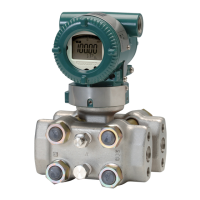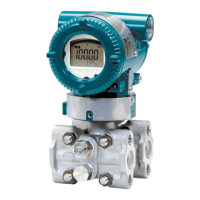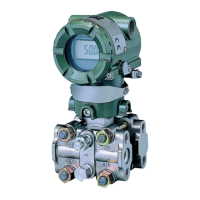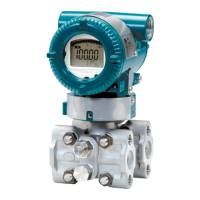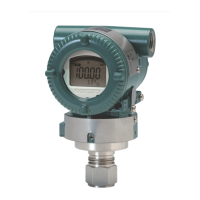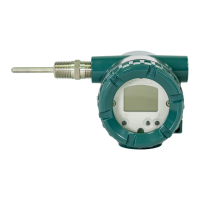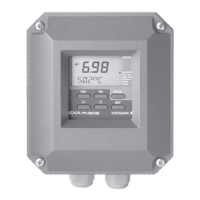<3. Parameter Setting>
3-32
IM 01C25T01-06EN
e. Burst Mode
When the Burst mode is set to “Wired HART
Enabled”, the transmitter starts to send the data.
• Procedure to call up the display
DD and DTM [Root Menu] → Detailed setup
→Output condition →HART
output → Burst condition → Burst
Message 1,2 or 3 → Burst mode
→ Wired HART Enabled
3.3.16.2.2EventNotication
When a setting change and a change of the Self-
diagnostics occur, device detect it as an event and
can transmit an alarm signal continuously.
Up to four events that occurred can be stored.
When using this function, set to Burst mode as
“Wired HART Enabled”.
(1) SetEventNotication
• Procedure to call up the display
DD and DTM [Root Menu] → Detailed setup
→Output condition →HART
output → Burst Condition →
Event Notication →
→ Event Mask Set the status to detect
→ Set Event Notication Timing
→ Event
Notication
Retry Time
Set the retry time when the event
occur.
→ Max Update
Time
Set the retry time when the event
does not occur.
→ Event
Debounce
Interval
The setting of the minimum event
duration
→ Event
Notication
Control
Stop the event monitor: O
Shift to the monitor state: Enable
event notication on token-
passing data link layer
a) Event Mask
Set the status to detect in the Event Mask
parameter.
Device Status Mask
Status group 1 Mask to 10 Mask
Ext dev status Mask
Device Diagnostic Status 0 Mask
Device Diagnostic Status 1 Mask
AO saturated Mask
AO xed Mask
When changing the conguration of the device,
Conguration Changed (0x40) Flag (refer to Table
4.7) of Device Status is set, and Cfg chng count
(refer to subsection 4.1.3 (5)) is also incremented.
Conguration changed ag detection can be
masked by the Device Status Mask, but it is
impossible to mask the Cfg chng count.
Therefore, the conguration changes to the device
are always detected as an event regardless of the
setting of the Device Status.
b) EventNoticationRetryTime/MaxUpdate
Time/ Event Debounce Interval
Set to Event Notication Retry Time, Max Update
Time and Event Debounce Interval.
For EventNoticationRetryTime, set the value
that is smaller than Max Update Time.
EventNotication
Retry Time
/Max Update Time
Event Debounce Interval
--- O
0.5 s 0.5 s
1 s 1 s
2 s 2 s
4 s 4 s
8 s 8 s
16 s 16 s
32 s 32 s
1 min 1 min
5 min 5 min
10 min 10 min
15 min 15 min
30 min 30 min
45 min 45 min
60 min 60 min
c) EventNoticationControl
Select “Enable event notication on token-passing
data link layer” in the EventNoticationControl
parameter to shift to the monitor state:
(2) AcknowledgeEventNotication
The transmission of the event message stops when
event is approved.
• Procedure to call up the display
DD and DTM [Root Menu] → Detailed
setup →Output condition →
HART output → Burst condition
→ Event Notication →
Knowledge →
→ Acknowledge
Event Notication
Acquisition of the event number
and approval.
a) Get Event Number
Conrm the latest event number.
Execute AcknowledgeEventNotication
method.
1) Enter Event Number is set to “0”.
2) OK.
3) Set “Trans 0: Read Event Noticaiton” to
Select Transaction.
4) OK.
5) Conrm Event Number.
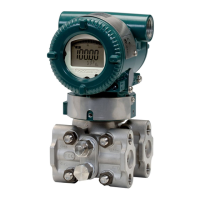
